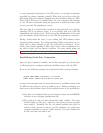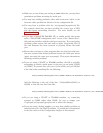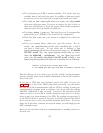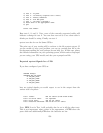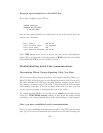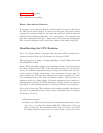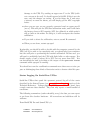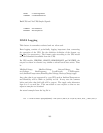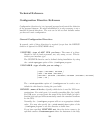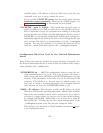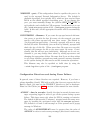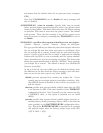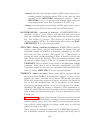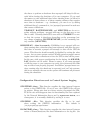damage to the UPS. Try sending an upper case Y to the UPS (with-
out a return at the end). It should respond with SM. If this is not the
case, read the chapter on testing. If you fat finger the Y and enter
y instead, no cause for alarm, you will simply get the APC copyright
notice.
• when you are sure you are properly connected send an upper case D
(no cr). This will put the UPS into calibration mode, and it will drain
the battery down to 25% capacity (35% for a Matrix) at which point it
will go back on the mains. In doing so, it will recompute the runtime
calibration.
• If you wish to abort the calibration, enter a second D command.
• When you are done, restart apcupsd.
In principle, you should be able to do this with the computer powered by the
UPS, but if you wish to be completely safe, you should plug your computer
into the wall prior to performing the runtime calibration. In that case, you
will need to artificially load the UPS with light bulbs or other means. You
should supply a load of about 30 to 35% but not more than 50%. You
can determine the load by looking at the output of the apcaccess status
command while apcupsd is running.
You should not run the recalibration command more than once or twice per
year as discharging these kinds of batteries tends to shorten their life span.
Status Logging On Serial-Line UPSes
Serial-line UPSes that speak the apcsmart protocol log all of the events
described in the Status Format (see apcupsd Status Logging) section of the
Technical Reference. Voltage-signalling UPSes, on the other hand, have
a much narrower data channel. They can only report a small handful of
conditions.
The following summarizes (rather sketchily, sorry) the data you can expect
to get from this obsolete hardware. All corrections and additions will be
welcome.
From BackUPS Pro and SmartUPS v/s:
LINEFAIL : OnlineStatus
BATTSTAT : BatteryStatus
162




